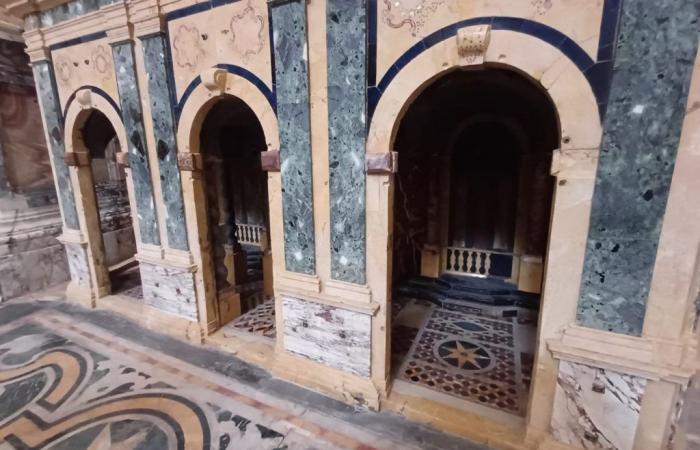
The church of San Francesco Borgia in via Dei Crociferi reopens five years after it was closed to the public to allow for restoration and extraordinary maintenance work. The inauguration is scheduled for tomorrow afternoon (at 4pm) and the opening to the public starting from Saturday. Thus the three most beautiful and important churches on Via dei Crociferi – San Benedetto, San Giuliano and San Francesco Borgia – will finally all be accessible to citizens, visitors and tourists. An important step forward for the protection and use of the city’s cultural and monumental assets.
The works were made possible thanks to the project drawn up by the “Archaeological and landscape park of Catania and the Aci Valley”, which also manages this Jesuit church owned by the Region and thanks to the funds of the Po-Fers 2007-14 .
This amounts to 460 thousand euros, of which 200 thousand are intended for building interventions and 260 thousand aimed at the restoration of structures and works. Thanks to these resources, the two magnificent marble altarpieces on both sides of the transept, the work of Marabitti and Marino, have been restored, high reliefs representing the founder of the company of Jesus, Saint Ignatius and one of his first and most important followers, Saint Francis Xavier. All the altars have been restored, including the beautiful ancient green spiral columns of Rome from which, in the past decades, the bronze festoons that followed the shape of the volutes were removed. Still. The eighteenth-century wooden pulpit and the tempera on the part of the apse which recalls the drapery of the pulpit have been restored. This is an intervention from the 1930s since the iconographic documentation revealed that the wall was not painted before that date.
The golden jealousies were also restored and the splendid lapis lazuli color was restored, while this precious stone was used in the shields of the altar of Sant’Ignazio also enriched by a fascinating architectural frontal, of Palermo inspiration, which creates the optical illusion of large spaces with polychrome floors and arches. The seventeenth-century Crucifix and the golden reliquary wall, from the eighteenth century, on which it was placed have also been restored. The painted altarpieces and canvases of the church, those that survived the theft, were also restored with European funds. There are some from the seventeenth century, therefore coming from other churches and from a pre-existing church, and others from the eighteenth century, contemporary with the construction of San Francesco Borgia after the earthquake of 1693. Then architects, sculptors, decorators, painters arrived in Catania, many of whom came from Messina, like Giovanni Tuccari, Tancredi and Foti who worked in the Jesuit church. Finally, the electrical system was also redone. The dome and lunettes frescoed by Oliviero Sozzi had been restored in a previous intervention.
But European funds were not sufficient to complete the works so that the “Archaeological Park”, which has its own financial autonomy thanks to ticketing, has allocated 100 thousand euros for this purpose. With these resources, the entire marble floor of the church was polished, the sacristy with its three rooms was cleaned, the sacristy furniture, the fresco on the roof, and the staircase leading to the college area were restored. dedicated to the Jesuit fathers where there is an interesting baroque statue of San Luigi Gonzaga. And it is clear that, now that the church will be reopened to the public, it becomes increasingly urgent to make the Jesuit college accessible – after so many years – with its magnificent cloisters, a place destined to house the regional library. An important cultural space for the city.
The inauguration of the multimedia route and the reorganization will be attended by Archbishop Luigi Renna, the prefect Maria Carmela Librizzi, the regional councilor for cultural heritage Francesco Paolo Scarpinato, the mayor Enrico Trantino and the superintendent Donatella Aprile. The director of the Park Giuseppe D’Urso will introduce the meeting, while the visit will be guided by Gaetano Bongiovanni, art historian of the Park and Luisa Paladino, art historian, former director of the then museum center and now scientific consultant. He also wrote the volume “The treasures found” which presents all the interventions relating to the first restoration and illustrates the precious assets belonging to the church. A second volume, relating to the recently completed restoration, is underway.
It will be open to the public starting from Saturday, every morning, including Sunday, from 9am to 1pm, and in the afternoon from 3pm to 6pm, with last entry at 5.30pm. Given the serious shortage of custodians, the Park will bend over backwards to guarantee the opening and announces that, after an initial period in which entry will be free, a small entrance fee will be paid.





